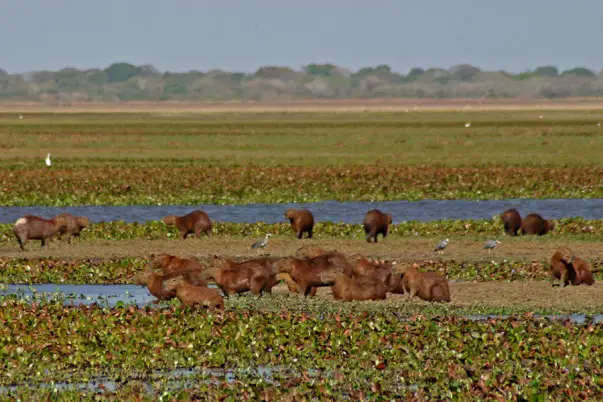June 12th, 2012 — 3:25pm
Also known as the ‘Palakkad Gap’, a low mountain pass representing the major break in the Western Ghats mountain range. The Nilgiri Hills rise to around 1100 m AMSL north of the gap and the Anaimalai Hills approximately 2000 m AMSL to the south, with average elevation within the gap 144 m AMSL. The gap has been shown to represent a biogeographic barrier restricting gene flow between populations of numerous species including Indian elephant and various birds.
Category: |
May 31st, 2012 — 10:29am
Production of electrical impulses in living organisms or tissues.
Category: |
May 28th, 2012 — 11:40am
Genus of parasitic dinoflagellates occurring in marine and freshwater fishes and sometimes referred to as Piscinoodinium or ‘velvet disease’.
Category: |
May 27th, 2012 — 12:39pm
Jointed or constricted at regular intervals so as to resemble a string of beads.
Category: |
May 25th, 2012 — 2:44pm
Arranged like a series of combs or the wire bristles on a wool card. In ichthyology used most commonly to describe the form and arrangement of teeth in certain species.
Category: |
May 21st, 2012 — 9:15am
Former supercontinent also known as Gondwanaland existing from approximately 510 to 180 Mya and comprising the majority of the landmasses in today’s Southern Hemisphere, including Antarctica, South America, Africa, Madagascar and the Australian continent, plus the Arabian Peninsula and Indian subcontinent.
Category: |
May 21st, 2012 — 9:11am
Interval of geological time covering the period from around 250 million years ago to 65 million years ago. Often referred to as the ‘Age of Reptiles’ because dinosaurs were the dominant terrestrial and marine vertebrates.
Category: |
May 21st, 2012 — 9:09am
Current and most recent of the three Phanerozoic geological eras, immediately following the Mesozoic Era and covering the period from 65.5 mya to the present. Also known as the ‘Age of Mammals’ due to the great diversification occurring among that group, it’s divided into three periods: Paleogene, Neogene, and Quaternary; and seven epochs: Paleocene, Eocene, Oligocene, Miocene, Pliocene, Pleistocene, and Holocene.
Category: |
May 16th, 2012 — 1:51pm
Refers to ‘Los Llanos’, a wide expanse of tropical grassland located east of the Andes mountains in Venezuela and Colombia. Much of the area undergoes significant seasonal fluctuations in water level due to flooding of the Río Orinoco which flows through it.

The llanos in Venezuela. © Harold Armitage

Capybara, Hydrochoerus hydrochaeris, in the llanos near Hato La Fé, Guárico state, Venezuela. © Magnus Manske

The llanos in Colombia. © David Noo
Category: |





Product reviewers wanted
Are you still looking for product reviewers?
19th Dec 2024
Product reviewers wanted
Hey! Interesting article!
17th Dec 2024
Site improvements
Got it! Thanks for the update. It's good to know that Seriously Fish is working on improving the site's performance and addressing the email and forum...
21st Nov 2024
Responsive design
Nice
13th Nov 2024
Responsive design
it is a complete malfunctioning horror on iphone and ipad.
10th Nov 2024